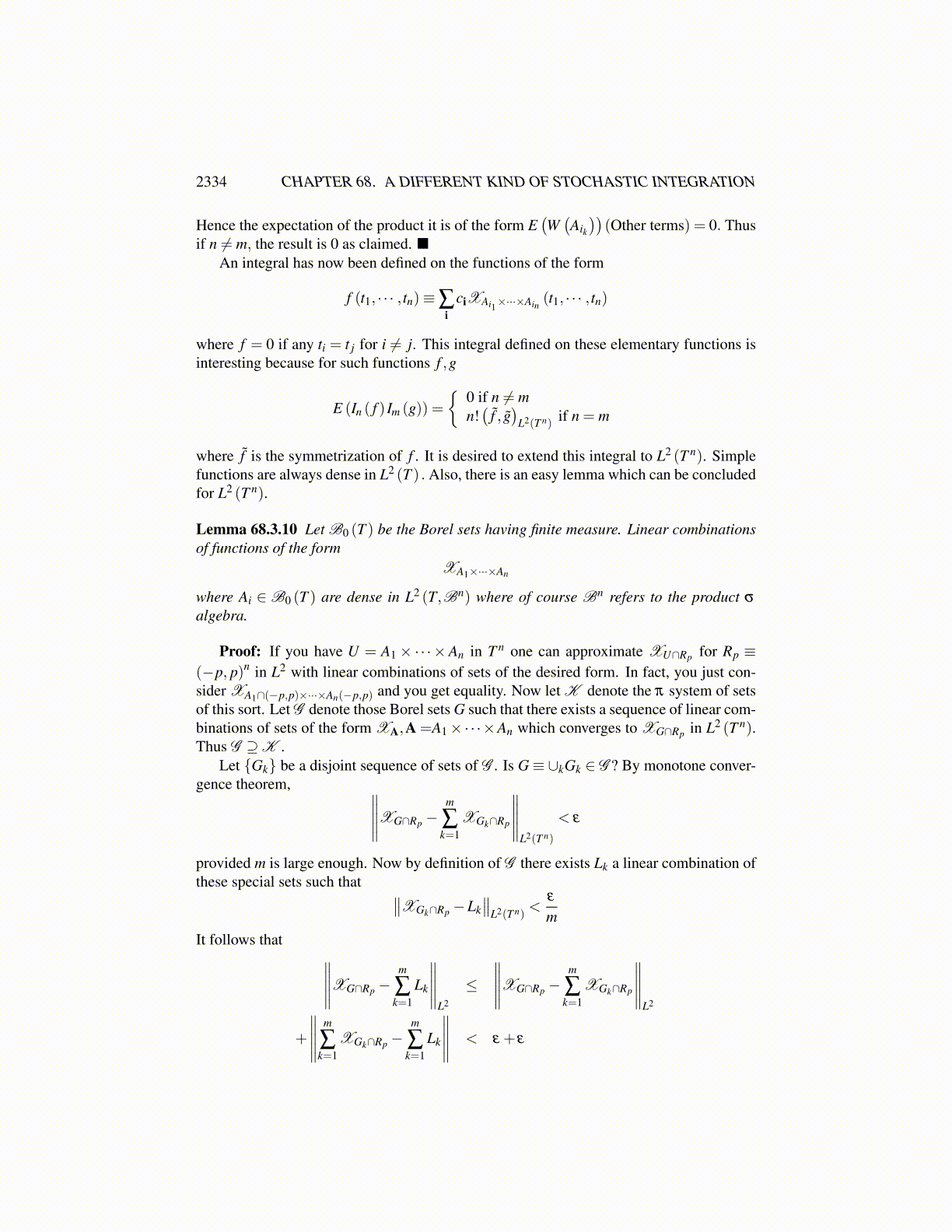
2334 CHAPTER 68. A DIFFERENT KIND OF STOCHASTIC INTEGRATION
Next consider for i = (i1 · · · in) ,
fσ (t1, · · · , tn) = ∑i
ciXAi1×···×Ain
(tσ(1), · · · , tσ(n)
)= ∑
ici
n
∏j=1
XAi j
(tσ( j)
)= ∑
ici
n
∏j=1
XAiσ−1( j)
(t j)
= ∑i
ciXAiσ−1(1)
×···×Aiσ−1(n)
(t1, · · · , tn)
Thus, it appears that fσ ̸= f . However,
In ( fσ )≡∑i
ci
n
∏k=1
W(
Aiσ−1(k)
)= In ( f ) (68.3.16)
because one just considers the factors in a different order than the other. The permutationacts on (i1 · · · in). Define the symetrization of f by f̃ given by
f̃ (t1, · · · , tn)≡1n! ∑
σ
fσ (t1, · · · , tn)
Then In(
f̃)= In ( f ) and
f̃(tσ(1), · · · , tσ(n)
)= f̃ (t1, · · · , tn) .
If f(tσ(1), · · · , tσ(n)
)= f (t1, · · · , tn) for all σ then f̃ = f . From the above, f̃ equals
1n! ∑
σ
∑i
ciXAiσ−1(1)
×···×Aiσ−1(n)
(t1, · · · , tn)
Note that 68.3.16 implies that
In ( f ) = In(
f̃)= n! ∑
i1<i2<···<in
ci1,··· ,in ∏k
W(Aik
)(68.3.17)
Now consider
f̃ = ∑i
ciXAi1×···×Ainand g̃ = ∑
idiXAi1×···×Ain
where without loss of generality, these sets Ak come from a single list of disjoint sets. Asabove, In ( f ) = In
(f̃)
and so it follows that
E (In ( f ) In (g)) = E(In(
f̃)
In (g̃)).
From the above, E(In(
f̃)
In (g̃))=
E
((n!)2
∑i1<···<in
∑j1<···< jn
ci1,··· ,ind j1,··· , jn ∏k
W(Aik
)∏
lW(A jl
))
= (n!)2∑
i1<···<in∑
j1<···< jn
ci1,··· ,ind j1,··· , jnE
(∏
kW(Aik
)∏
lW(A jl
))
= (n!)2∑
i1<···<in∑
j1<···< jn
ci1,··· ,ind j1,··· , jnE
(∏
kW(Aik
)W(A jk
))(68.3.18)